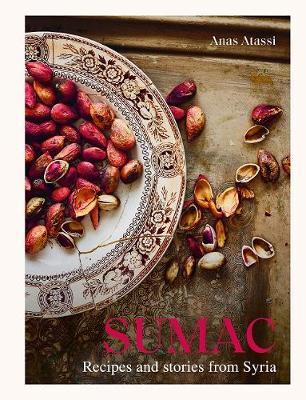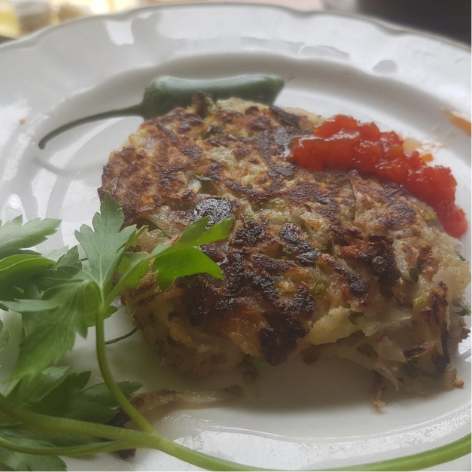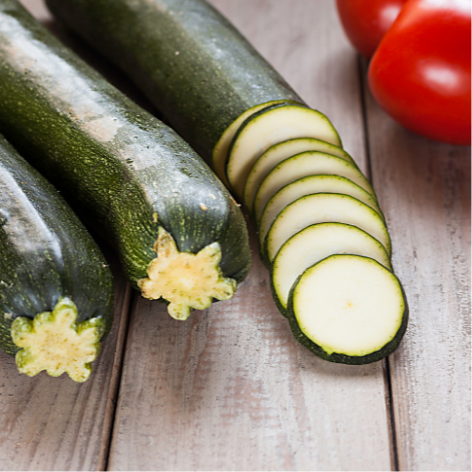 Farming for Nature It can be all too easy to sink into the depths of despair lately. No one needs me to point out the obvious on that one. With the seemingly endless bombardment of, oh, I don’t know, pandemics, wars, skyrocketing cost of living, potential fiery death of planet and all life along with it, to name a few, it can feel impossible to see the light at times. With good reason, a lot of us are spending a lot of our time in survival mode, barely concealing anxiety, panic and terror. It can be argued that this is, in fact, a rational response to a broken world. But, the nature of fear and panic is that it can become all-consuming. It is also contagious. Once sparked, it spreads like wildfire. It can become increasingly difficult to maintain precisely what is needed when things around us feel like unmanageable chaos: balance, hope, or , dare I say it, optimism. A steely focus on what we can do instead of drowning in a sea of everything outside of our control. Of course there will be days where we have to let ourselves submerge a little bit - we can’t pretend that those things outside of our control, those things capable of knocking the breath from us, don’t exist. But, without a sense of hope, we lose the ability and strength to pull ourselves up out of the water, take deep lungfuls of air, and start the battle afresh. Anecdotally, it seems that those who try to manage their reactions to the wildfire, those who maybe aren’t outwardly panicking, who maybe are even trying to remain hopeful, immediately raise suspicion. Others wonder whether this person is existing in some sort of alternate reality, unaware of what’s actually going on. Am I exaggerating? There must be few among us whose daily interactions and encounters don’t include some version of doom discussion, some questioning of whether there is any good news out there to cling on to. Against all odds, yes there is. It isn’t as ubiquitous, maybe not even as powerful, as the rest. But, it’s there. For my part, I would like to share something that is feeling a little bit like some calm among the chaos: the upsurge in interest in regenerative farming. Regenerative farming encompasses ways of farming according to principles which place the health of soils and ecosystems at the centre of the process. Rather than traditional methods which have plundered and depleted to serve increasingly unsustainable food supply demands, a symbiotic relationship between farmer and land, nurtured to provide for both human and nature, is at the forefront here. Regenerative farming is slowly making its way from the fringes. Over time and with patience, switching to and investing in regenerative farming practices will benefit us all. Farmers’ input costs are lower and not so reliant on volatile external systems. The food we, as consumers, have access to is much more nutritionally dense. Nature, the land, the soil, wildlife starts to return to full health. Psychologically, we start to return to the knowledge of us as part of the earth and the earth as a part of us. This feeling of disconnect from nature that so many have grown up with is, in my mind, in desperate need of attention. This has just been a criminally brief overview - the benefits are, in fact, endless. I’m not the only one who can see the benefits of making these changes. I can’t seem to stop coming across grassroots projects aimed at enhancing this awareness. Projects and groups finding ways of giving back to this earth, at working with it instead of taking from it, at fiercely pushing back against the damage we have done, at protecting and enhancing biodiversity, at finding ways to gather together and figure out how we can best serve this earth we have so hurt. It’s like when you learn a word for the first time - suddenly, you’re seeing it everywhere. I wrote about Doon Social Farm here previously. Now I hope you’ll join me in learning a little bit about Farming for Nature. Farming for Nature was set up as a storytelling vehicle, and a support network, for farmers nationwide to document and share their relationship with managing their lands according to regenerative practices. There can often be a narrative that farmers are locked in battle with nature, subduing it to their will in order to make their living in the most efficient way possible. The premise for Farming for Nature is the importance of understanding why that may be the case, while also spreading awareness that this is an unfair and reductive view. In the experience of many within this sector, farmers’ sometimes complicated relationship with the land does not come from an inherent disrespect for it. It’s unlikely anyone could be a farmer without a love for, and appreciation of, the land. Instead, consider that, in order to make as stable a living as possible in an increasingly volatile sector, farmers have long turned to the support of government strategies and funding, many of which have not had biodiversity and soil health on its list of priorities. Competing for resources and customers, all else falls by the wayside, a survival mode and panic can kick in. When we are struggling to meet our basic needs, our brains switch off to everything other than the quickest and most efficient way to get those basic needs met. Maybe we don’t have the space or support or time to think about the ripple effect of the methods used to get there. Mirroring the problems with our global food systems at large, the top-down narrative that output and yield is king, and that this necessitates plundering the land for all we can get without repair and restoration, has done immeasurable damage. It has run its course. The Farming for Nature network, its members and ambassadors, its comprehensive library of written resources, YouTube videos and podcasts, are an invaluable resource to direct us forward from this point, to guide farmers and public alike to a more enlightened and harmonious relationship with farming, with our food provenance, with nature. Don’t get me wrong: individuals should not be tasked with taking on the responsibility and cost to change entire systems, while those in power sit back and watch on in comfortable complacency. Support is needed. I am, of course, conscious of the challenges that farmers face in even beginning to rethink all of this. It is not easy to completely change the way you’ve always done things, to pivot to new systems, especially without appropriate funding, resources, education, supports; and maybe even without the interest, or will. But, the mere existence of, and widespread interest in, Farming for Nature, and similar grassroots projects, is a huge bright point at a time when bright points can feel hard to come by. So many of us now see that the benefits that come from regenerative farming can no longer be seen as a luxury in the midst of climate, food and biodiversity crises of our making. It is our responsibility, and more importantly, the responsibility of those in power, to rethink the ways we have always done things, and provide support for new, healthier ways forward. The only downside is that this takes time; time many of us fear we don’t have. But, that the awareness of our interconnectedness with this earth is increasingly important enough to a large enough group of people to begin to make these changes, even when it causes them discomfort, even with the niggle that time is running out, gives me hope. Consider this an example of a tale as old as time. In the vacuum created by lack of support and guidance from above, individuals tend to band together. Community-building, and sharing of skills and knowledge, in the face of difficulties and disaster has long been a cornerstone of progress. Taking matters into our own hands, if you will, while we wait for the higher ups to catch on. If this type of thinking is being stoked in the farming and food supply world, a sector so integral to our island, to our whole world, it’s not quite time to throw in the towel just yet. From the ground up, the message will be heard. Do the glimmers of hope outweigh the genuine reasons to be worried? I’m not sure. I do know that counteracting fear and hopelessness is essential. It isn’t a case of pretending the reasons to be afraid aren’t there. It isn’t a case of being delusional (although, a little healthy delusion can have its uses at times). It’s a case of trying to keep hope alive, alongside acknowledgement of, and, where possible, action to confront, the reasons to be worried. Searching for little glimmers of hope, connections and kindnesses doesn’t mean we are oblivious or indifferent to the harsh realities of the world we live in, the things to be reasonably upset and frightened about. But, hope is a powerful thing. And, losing hope is even more powerful still. We can’t challenge and question and push for change if we’ve lost hope. So, at the risk of being accused of toxic positivity, whitewashing, greenwashing, whatever other washing I might potentially be guilty of here - I invite us to keep trying to find our own reasons to be, if not cheerful, at least not hopeless. Some resources for learning more about Farming for Nature: https://www.farmingfornature.ie/resources/
https://www.youtube.com/watch?v=WZjnC1-s1Rw
A handful of local examples of farmers and groups practicing regenerative farming/ tackling biodiversity crisis (happily, the list nationwide is long and growing). SeedSavers in Scariff, Co. Clare.
Brookfield Farm on the banks of Lough Derg in Co. Tipperary. https://www.farmingfornature.ie/nominees/ailbhe-gerrard-2/
Hometree: a tree planting conservation project in Ennistymon, Co. Clare.
And, of course, our very own Jim Cronin! Kelly Girardi Instagram @kelly_girardi Linktree kelly_girardi
0 Comments
Let us know which of our products are your favourites and why
Email Geraldine on bookings@theurbanco-op.ie
Within the first few sentences of the introduction, it is clear that this invitation, this warmth is the thread weaving the whole book together. The meaning behind cooking for, and with, loved ones. Memories of a childhood spent sitting impatiently but safely, comfortably around laden tables, wandering winding streets, frequenting favourite market stalls. Family. Community. Sharing. Support. The expression of things unsaid, only able to be communicated through a bulging plate and a satisfied stomach. This is the power of food - sitting down to eat a meal with loved ones is never just about the food on the table. It is about the act of taking time together. Of serving with warmth, and of receiving with gratitude. Of building and maintaining ties that have lasted a lifetime. Of making memories. All through the conduit of food.
As Anas Atassi notes, for Syrians, the importance of celebrating these ties has taken on a more potent meaning in recent years. The ongoing war in Syria has led to the largest refugee population in the world. Families separated and strewn across the globe, no longer able to wander into each other’s kitchens and inquire “what’s for dinner?!” before being batted away, to be called back when it’s ready. Denied the opportunity to gather, in typical Syrian tradition, at a grandmother’s exquisitely-prepared table on a Friday morning. To sit with loved ones and enjoy a meal, especially with frequency, is something that so many of us take for granted. Syrian families have had to weather this loss, adapt, rebuild families and communities in countries unfamiliar to them. A relationship with food is so often key to maintaining a sense of hope, a sense of something to look forward to, while also keeping the past, a history, a unique culture close to one’s heart. This book confirms this for us. Retaining a connection with traditional food, and sharing these recipes and routines in their adopted homes, has been integral to resettling and starting to rebuild from scratch for many Syrians. A culture, a way of life, can never truly be stamped out if people keep it alive, if they transport it with them and refuse to let it be usurped, or to just peter out. While this book tells the story of the recipes of Anas and his family, there can be no doubt it is a story that has resonated with many. As Anas explains, “This is why I share the stories of my family in this cookbook. They are not only my stories. They are the stories of an entire people - stories that are tied to our collective hearts, and have become all the more important because of the recent turmoil”. I am conscious to word what I say next very carefully. While reading this book, I am holding close to my chest this awareness of the reality of why Syrian recipes and stories have burst onto the Western scene over the past decade. I wish our unfettered access to other cultures and cuisines wouldn’t happen for the heart-wrenching reasons that it so often does. I am not saying that the price to pay for the opportunity to learn about the importance of Syrian tablecloths, about family traditions, feasts, celebrations, ‘women only soirées’, about dishes like jallab, kaak, ouzi, is death and involuntary displacement of millions, is cities, homes and nature razed to the ground. But, another part of me, in feeling gratitude that this book exists, wondered whether this access to the foods and recipes and stories and kitchens of Syria would ever have reached us in the ways that they have. The colour and flavour and beauty and diversity are such an incredibly welcome addition to Western food culture. In cataloguing his family’s recipes, Anas introduces us to, and unapologetically insists we stock up on (or learn to make!), essential ingredients such as aleppo pepper, pomegranate molasses, za’atar, sumac (of course). Often these ingredients are local to different regions of Syria, or the same ingredient is used in vastly different ways according to the region. To learn about such ingredients, the ways in which they are traditionally used, the variations from region to region, is an exciting privilege that many of us may have had to travel to experience in the past. To experience the food of a place on the land that it comes from is an experience that can never be copied or replaced. But, if the next best thing is access to these books and restaurants, we are lucky to have them. One of the most exciting things I’ve learned about Syrian cuisine through reading this book is how adaptable it is, and always was. This tendency isn’t due to the most recent war. Syrian recipes and dishes have always been ever-evolving, based on the influence of other cultures, based on preferences within individual families. To me, these are the most exciting cuisines - learn the basics, but know there is always room to tweak and play! On this note, living on such a meat and dairy-centric island, it is refreshing to learn how well one can eat as a vegetarian diving into Syrian cuisine. One last thought: this book introduced me to the Syrian concept of nafas. While nafas literally translates as ‘breath’, it can be better described in this context as that indefinable element that ties a meal, a moment, an experience together, bringing it just shy of that elusive beast: perfection. How glad I was to learn a word for that essential but intangible element in any recipe, in any mealtime, in any gathering, that elevates it to new heights. It is a word we don’t have an equivalent for in English. Maybe in French we would call it that je ne sais quoi. I don’t know why, but I prefer nafas. Anas memorably explains that nafas is “found in the heart of the person at the stove and in the essence of a well-prepared dish”. He tells us that his mother has nafas. His grandmother has nafas. He hopes that we, too, can find our nafas as we step into the kitchen to try to recreate some of these ancient yet new, simple yet intricate, flavours. I hope so, too. Kelly Girardi Instagram @kelly_girardi Linktree kelly_girardi
It is amazing how today we can find so many vegan dishes in the market, a great sign for the future of humanity. At times, our interests extended to food we also cooked at home. On day, Damian came into the market with some of these for me to taste and they were still warm, all I could say was, “yumm!”
I had to have the recipe. His secret (not anymore) was to add a good few dollops of Natural cream cheese from Hungry Soul. He said it made all the difference, by now I trusted his culinary judgement. Now when I proceed to make them I did things my way and added a few other ingredients. So, let’s just say, Irish Rosti by Damian & Jacques 😊 Ingredients
Method
Serve with anything – a little chilli jam, vegan mayo, Dijon mustard. They also taste great cold for that snack later in the day. Wonderful for a brunch with grilled tomato, vegan sausages and a nice strong coffee. Bon Appétit @HungrySoulVegan - Changing the Culture
Ingredients
Serves 3-4
Method
The fresh flavours of the vegetables, garlic and herbs is delightful on a chilly OR warm summer’s evening. Katie Verling |
Categories
All
Archives
April 2024
AuthorsRecipes from Katie Verling & Jacques |






 RSS Feed
RSS Feed